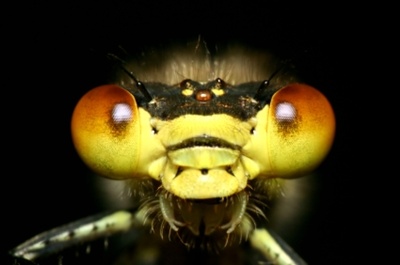10 Sep 2012
Small business technology transfer (STTR) proposal from the Air Force Office of Scientific Research looks to imitate compound eyes.

Inspired by nature
“Drones”, the unofficial term used to describe the unmanned aerial vehicles (UAVs) that are increasingly used in airborne reconnaissance and combat missions, could be about to get even more drone-like.
The US Air Force is currently sourcing proposals to devise biologically inspired optical sensors for its autonomous vehicles, for example imitating the compound eyes of the male honeybee – more correctly known as a drone.
In a small business technology transfer (STTR) proposal issued recently by its development arm, the Air Force Office of Scientific Research, the US Air Force outlines 15 different projects, of which seven relate directly to optics technologies.
Of those, topic AF12-BT03, entitled “Biologically-inspired integrated vision systems”, describes the limitations of current optical sensors, which are based more on the human eye and said to be “in some respects very limited in capability”.
To replace those, says the US Air Force, it would like to see the development of “advanced imaging sensors specifically designed to utilize most if not all of the information in the light field (spectral, temporal, polarization, detailed object shape) for applications enabling autonomous behavior”.
They want optical designers to take inspiration from biological systems, including insects, crustaceans and spiders, organisms that have evolved to detect and interpret optical information in a more advanced manner than the human eye, to enable functions such as the detection, recognition, ranging and tracking of specific targets.
One example of such functionality is the ability to perform directional sensing relative to the celestial pattern of polarization. In some cases, this phenomenon is well understood, states the STTR proposal document, with insects known to use the hexagonal ommatidia (clusters of photoreceptor cells) in their compound eyes as a kind of “visual compass”.
Three-phase plan
A month-long pre-solicitation period for each of the new topics was completed in late August, while a formal solicitation period for the proposals is now under way until the deadline expires on September 26.
For the “biologically inspired vision systems” topic, three phases of developments are proposed. Phase I of the projects, which would receive $150,000 and last nine months, would involve the development of a design for a prototype system, along with design analysis to demonstrate functionality and feasibility.
If successful, the two-year, $750,000 Phase II part of the project would focus on production of a functional prototype and early contractor testing, with commercial applications in surveillance and search and rescue sensors earmarked for Phase III.
Aside from insect-eye sensors, the optics-related topics highlighted in the US Air Force proposal document include:
• AF12-BT02: Low Level Signal Detection for Passive Electro-Optical Space-based Surveillance
• AF12-BT06: Innovative Electro Optic Signature Exploitation for Recognition Advancements
• AF12-BT08: Compact, Low-Cost THz Test System
• AF12-BT11: High-resolution Solar irradiance EUV Spectrum Forecast
• AF12-BT13: Subaperture Adaptive Optics for directed energy phased arrays
• AF12-BT14: Adaptive multi-sensor wide area situational awareness system
Further details are available via the Department of Defense small business interactive topic information system.
| © 2025 SPIE Europe |
|